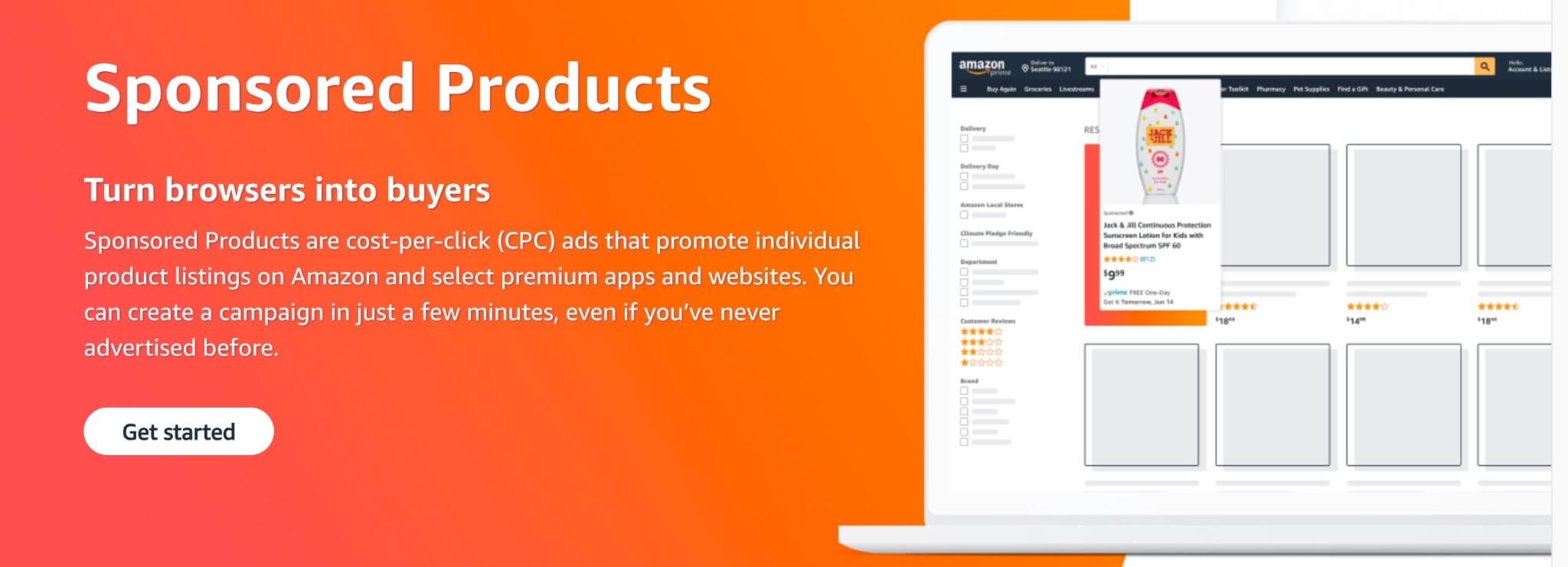In the dynamic landscape of e-commerce, Amazon Sponsored Products stand as powerful allies for sellers striving to boost product visibility, attract targeted traffic, and accelerate sales. As one of the leading advertising platforms, Amazon provides an array of tools, along with Amazon consultant, to help sellers showcase their products to a vast and diverse audience. In this comprehensive guide, we’ll embark on a step-by-step tutorial to unravel the potential of Amazon Sponsored Products with our Amazon consulting experts. Whether you’re a seasoned seller looking to refine your advertising strategy or a newcomer eager to harness the full power of Amazon Sponsored Products, let’s dive into the intricacies of creating effective Sponsored Product campaigns with your favourite Amazon marketing consultant.
Understanding the Basics:
What are Amazon Sponsored Products?
Amazon Sponsored Products are a pay-per-click (PPC) advertising solution designed to showcase individual product listings within search results and on product detail pages. These ads operate on a bidding system, allowing sellers to bid on specific keywords and pay only when shoppers click on their ads. The result? Increased visibility, targeted exposure, and a potential boost in sales.
Benefits of Amazon Sponsored Products
1. Increased Visibility:
Placement on Search Results: Sponsored Products appear prominently in search results, ensuring that your products are visible to customers searching for related items.
Featured Product Placement: These ads also secure placement on product detail pages, giving your products additional exposure.
2. Targeted Advertising:
Relevant Audience: Sellers can target specific keywords relevant to their products, ensuring that their ads are shown to users actively interested in those keywords.
Product Targeting: Besides keywords, sellers can target their ads based on specific products or categories, allowing for precise audience targeting.
3. Cost Control:
Pay-Per-Click Model: Sellers are charged only when users click on their ad, making it a cost-effective advertising solution.
Budget Management: Sellers can set daily or campaign-level budgets, providing control over advertising costs.
Getting Started with Amazon Sponsored Products
1. Keyword Research:
Identify Relevant Keywords: Research and select keywords that accurately represent your products. Think about what terms potential customers might use to find your items.
2. Create Compelling Ad Content:
Engaging Titles and Descriptions: Craft compelling and relevant titles and descriptions for your ads. Highlight key features and benefits to entice potential customers.
3. Set Your Budget:
Define Daily Budgets: Determine how much you are willing to spend daily on your sponsored ads. Amazon allows you to set budget limits to manage your expenses.
4. Monitor and Optimise:
Regularly Review Performance: Keep a close eye on the performance of your sponsored ads. Identify high-performing keywords and optimise your campaigns accordingly.
Adjust Bids: Fine-tune your bids based on keyword performance. Increase bids for keywords that deliver good results and consider adjusting or pausing keywords that underperform.
5. Leverage Sponsored Product Campaign Types:
Automatic Targeting: Let Amazon automatically target your ads to relevant customer searches based on your product information.
Manual Targeting: Take control by manually selecting specific keywords, products, or categories to target with your ads.
How To Be Eligible for Amazon Sponsored Products?
1. Amazon Seller Account:
Active Seller Account: To access Sponsored Products, you must have an active Amazon seller account. Whether you are an individual seller or part of the Amazon Vendor program, having a functional seller account is the first step.
2. Product Availability:
Professional Sellers: Both individual and professional sellers can use Sponsored Products. However, professional sellers have additional benefits, such as bulk uploads and access to advanced analytics.
3. Offer Listing:
Product Listings: Your products must have a detailed and complete product listing on Amazon. This includes accurate product titles, descriptions, images, and other relevant details. Ensure that your listings comply with Amazon’s guidelines.
4. Buy-Box Eligibility:
Buy-Box Presence: For products to be eligible for Sponsored Products, they must be Buy-Box eligible. The Buy-Box is the section on a product detail page where customers can begin the purchasing process.
5. Buy-Box Winning Products:
Competitive Products: Sponsored Products are most effective for products that are competitive and have a good chance of winning the Buy-Box. Focus on promoting products that stand out in the marketplace.
6. Adherence to Amazon Policies:
Policy Compliance: Sellers must adhere to Amazon’s advertising policies. Ensure that your products and listings comply with Amazon’s guidelines to avoid any issues with eligibility.
7. Amazon Brand Registry (Optional):
Brand Registered Sellers: While not mandatory, being part of the Amazon Brand Registry can provide additional benefits, including increased control over your product listings and access to enhanced brand content.
Steps to Start Using Sponsored Products
1. Log In to Seller Central:
Access Seller Central: Log in to your Amazon Seller Central account. If you don’t have one, sign up and create a seller account.
2. Navigate to Advertising:
Visit Advertising Console: In Seller Central, navigate to the ‘Advertising’ tab, and select ‘Campaign Manager.’
3. Choose Sponsored Products:
Select Sponsored Products: Once in the Campaign Manager, choose ‘Sponsored Products’ to begin creating your advertising campaigns.
4. Set Up Your First Campaign:
Campaign Configuration: Follow the prompts to set up your campaign, including selecting products, choosing keywords, setting bids, and defining your budget.
5. Monitor and Optimise:
Regularly Review Performance: Keep a close eye on the performance of your sponsored ads. Adjust bids, add or remove keywords, and optimise your campaigns based on performance data.
By meeting these eligibility criteria and following the steps to create your Sponsored Products campaigns, you can harness the potential of Amazon’s advertising platform to enhance your product visibility and drive sales.
List of Categories Eligible for Amazon Sponsored Products
Appliances
Automotive
Arts, Crafts, and Sewing
Baby Products
Beauty
Consumer packaged goods
Mobile and accessories
Clothing and accessories
Collectibles
Computers and electronics
Fine art and Furniture
Grocery and Gourmet Food
Health and Personal Care Products
Home and Kitchen
Industrial and Scientific
Luggage
Movies and TV
Music and Musical Instruments
Office products
Patio, Lawn, Home and Garden
Pet Supplies
Shoes
Sports and Collectibles
Software
Tools and Home Improvement
Toys and Games
Video Games
Watches
Final Thoughts
Well, there’s that! Amazon Sponsored Products offer sellers a powerful means to enhance product visibility and drive sales in the highly competitive Amazon marketplace. By strategically utilising these advertising tools, sellers can reach their target audience, promote their products effectively, and achieve a competitive edge. As with any advertising strategy, regular monitoring, analysis, and optimization are key to maximising the impact of Amazon Sponsored Products on your business. So, dive into the world of sponsored advertising and unlock the full potential of your products on Amazon. Regular monitoring, testing, and adjustments based on performance data are key to ongoing success in the dynamic landscape of Amazon advertising. If you find yourself in need of an expert, feel free to contact eStore Factory’s Amazon consulting services.










About The Author
Jimi Patel
Jimi Patel, is a Co-founder and CEO at eStore Factory, an Amazon SPN certified agency that serves as a one-stop solution for all your Amazon business needs. Having helped countless brands increase sales and grow their footprint on Amazon, Jimi provides the most practical and effective solutions for your business. He is highly skilled in developing and executing plans that align with your specific business goals and objectives. When not working, Jimi enjoys practicing yoga and traveling to new places. He is an avid reader and enjoys staying up-to-date on the latest trends and developments in the e-commerce industry.